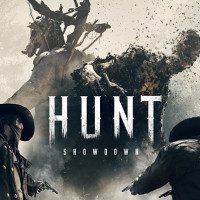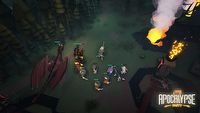Listening to Players and Responding Quickly are What Made Hunt: Showdown Successful, Says Crytek
Hunt: Showdown continues to be enjoyed by thousands of players. A Crytek representative recently explained what exactly is the source of the success of this FPS, which continues to be vigorously expanded by the developers.

Online shooter Hunt: Showdown is a big hit for Crytek. More than five years after its debut in Early Access the game is still regularly played by thousands of fans on Valve's platform and consoles. The lead manager of the title, David Fifield, recently spoke about the source of this success (you can find his commentary below).
Five months ago Hunt: Showdown set a new activity record on Steam. The shooter was played by 45,091 people at the same time.
- To date, the game has accumulated more than 186,000 reviews from users of Valve's platform. 82% of them are praising the game.
- Similar opinions are coming from experts (via Metacritic). The current average score is 81/100. Interestingly, this is valid for both the PC version and the PlayStation 4 edition (with 25 reviews issued).
These numbers are all the more impressive since the official release of the full version of Hunt: Showdown quite a few other online FPS games have been announced, but which have not stood the test of time (e.g. Hyenas from Creative Assembly). So how did the game in question manage to retain a sizable group of players? An answer was provided by the aforementioned David Fifield for MP1st.
"One of the key elements of our success, already initiated in early access, is consistently listening to our community and responding quickly to their feedback. Our updates are also an important factor in our success, as is the current event Tide of Corruption," Fifield said.
Early access to Hunt: Showdown launched on Steam in February 2018. Meanwhile, the official release of the full version took place on August 27, 2019 on PC, and in the following months on Xbox One and PlayStation 4. The game is also available on current-gen platforms as part of backward compatibility.
0

Author: Maciej Gaffke
At Gamepressure.com, he is mainly involved in writing news. Graduated in Polish philology and sightseeing and historical tourism at the University of Gdansk, which is related to his other "non-game" interests - history, books, and travel. As for video games themselves - once a fan of FPS, now converted to action-adventure games. Also interested in fighting games (especially Mortal Kombat), RPGs, and all titles focused on single-player. From time to time, likes to play tennis, volleyball, or football. Proud resident of Pomerania and Puck.
Latest News
- End of remote work and 60 hours a week. Demo of Naughty Dog's new game was born amid a crunch atmosphere
- She's the new Lara Croft, but she still lives in fear. Trauma after Perfect Dark changed the actress' approach to the industry
- „A lot has become lost in translation.” Swen Vincke suggests that the scandal surrounding Divinity is a big misunderstanding
- Stuck in development limbo for years, ARK 2 is now planned for 2028
- Few people know about it, but it's an RPG mixing Dark Souls and NieR that has received excellent reviews on Steam, and its first DLC will be released soon


